EDITION 151 - 2025
THE E-JOURNAL OF PORTS AND TERMINALS
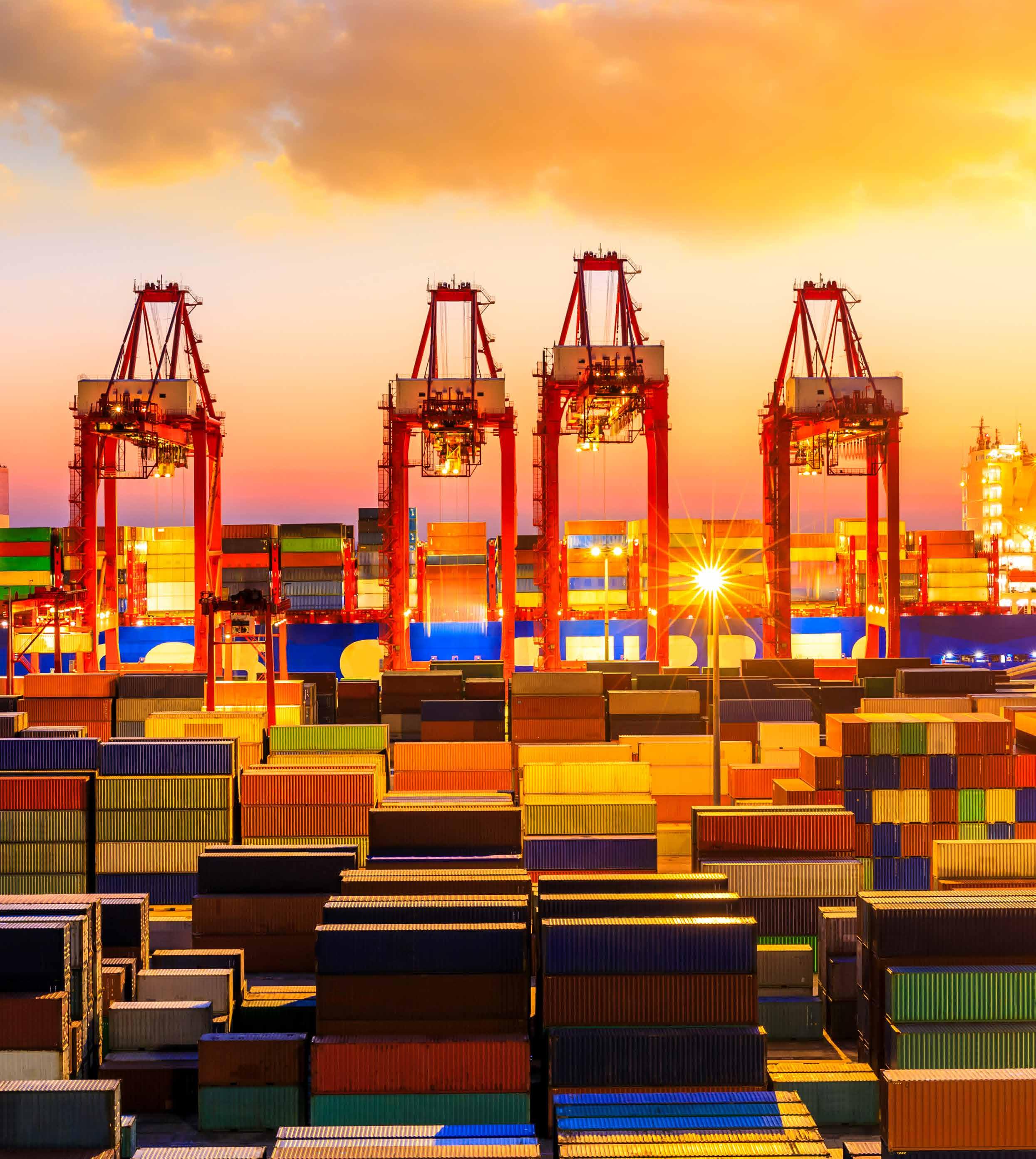

EDITION 151 - 2025

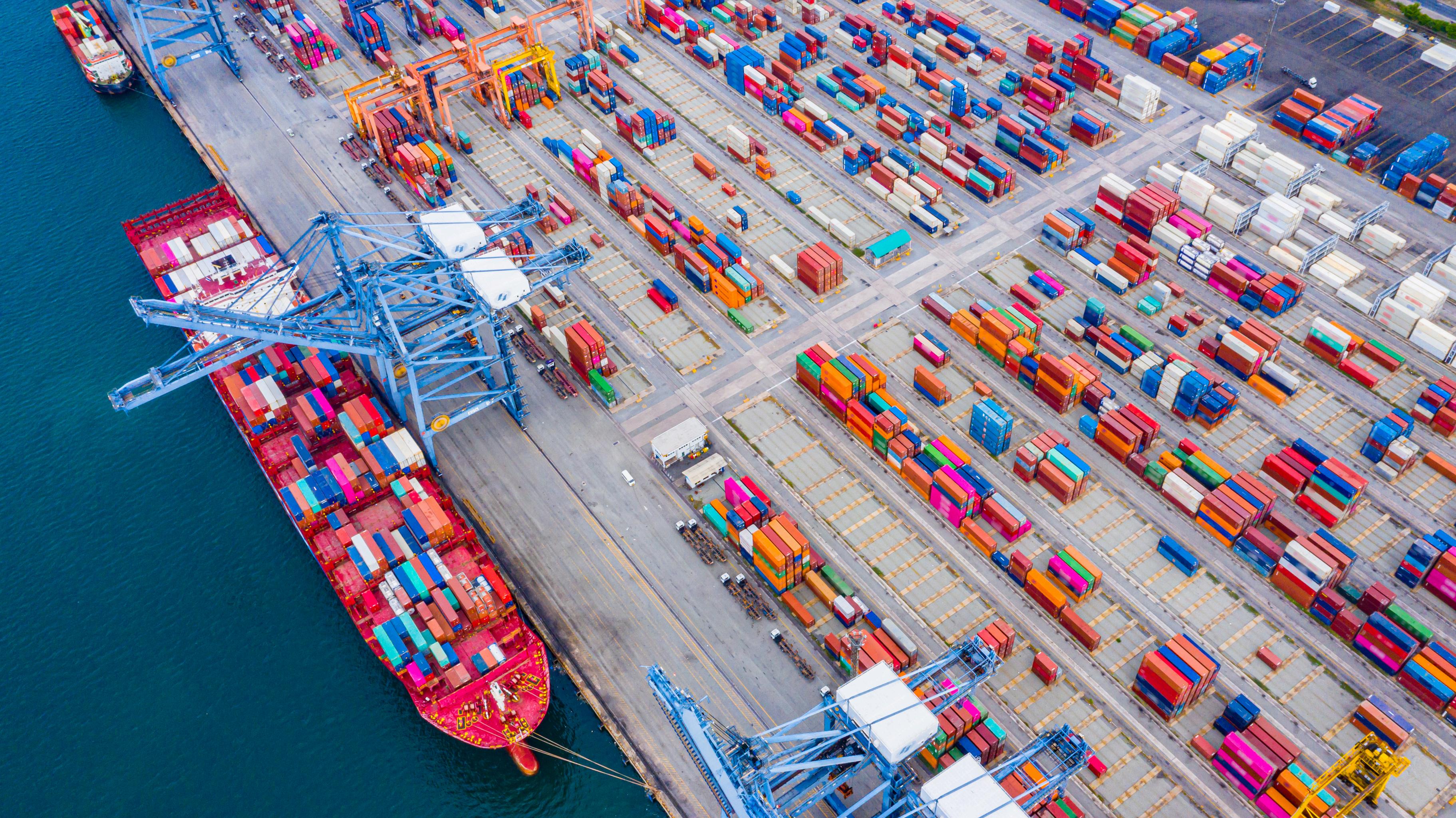

Delegates
Speakers
Sessions
PortTechnologyInternational'sflagshipevent,the ContainerTerminalAutomationConference(CTAC),is headingtoKualaLumpur,Malaysia.ThiseditionofCTACw introduceaneweventtailoredtotheAsianmarket,with high-qualitycontentandsolutionsfocusingontheunique challengesandopportunitiesintheregion.
Immerseyourselfintwoaction-packeddaysfilledwith engagingcontentwhereyoucanlearnfromindustry leadersandexplorehowtheworld’stopterminalsar transformingtobecomefaster,safer,andmore sustainable.Plus,therewillbetimededicatedto networking,includingaWelcomeDrinksreception, Networkingbreaks,andmore–perfectforhelpingbo yourbusinessconnections.
Secureyourticketnowtoavoidmissingout!
8 - 9 September 2025
Kuala Lumpur Malaysia

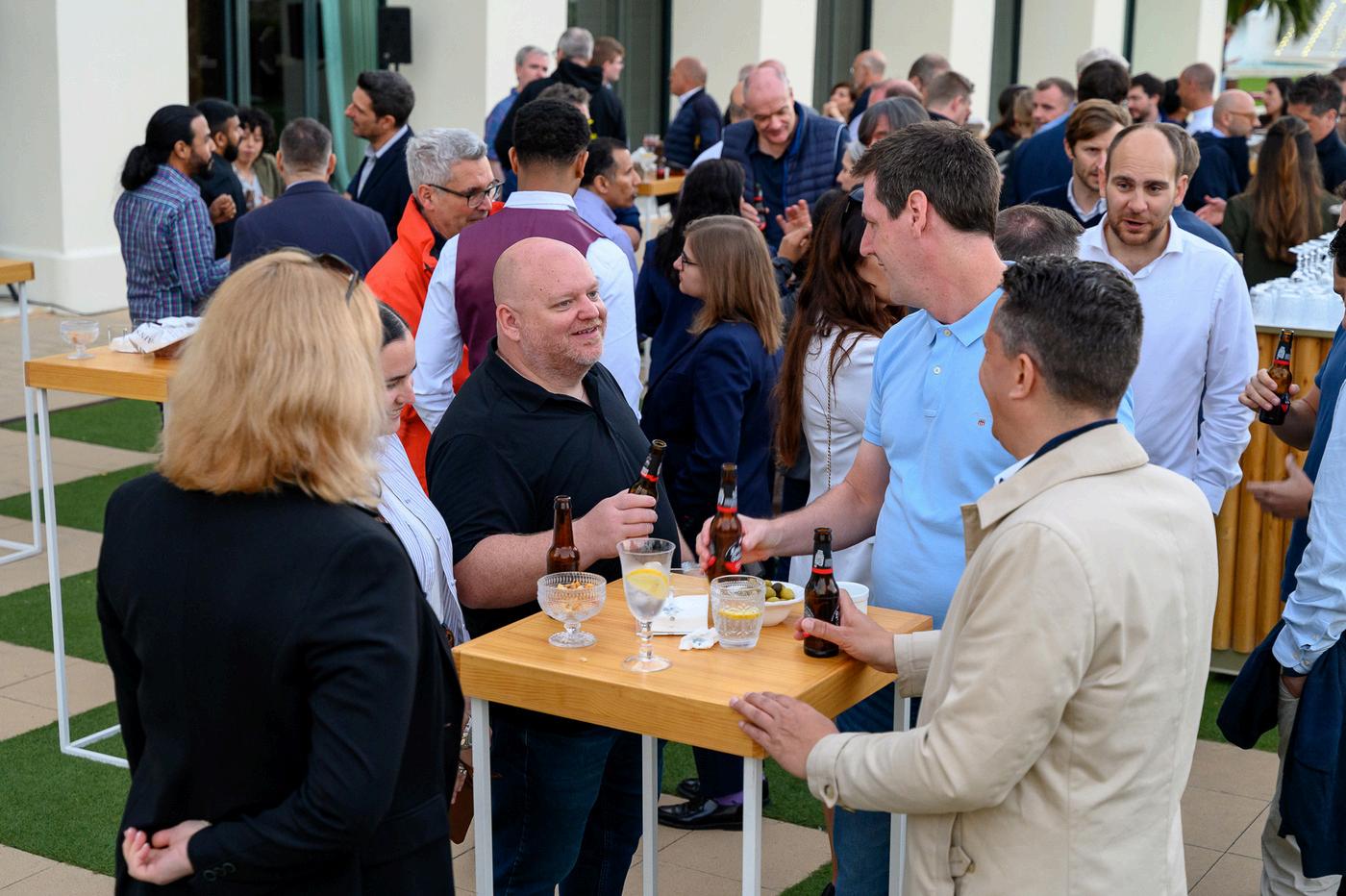

Welcome to the 151st edition of Port Technology International’s e-journal! This issue—Shifting the Digital Tide dives into the tools, mindsets, and breakthroughs redefining the way ports and terminals operate today.
Digitalisation is no longer a question of if, but how fast and how well we can adapt. In this edition, we’ve brought together a wide range of expert voices exploring where the momentum is heading—and how the most agile players in our industry are riding the wave.
We open with INFORM’s take on the growing influence of artificial intelligence, spotlighting the gap between early adopters and those slow to act. RBS follows with a bold look into autonomous AI agents and “superintelligent” Digital Twins, offering a glimpse into the future of
proactive, self-optimising operations.
Next, we hear from FERNRIDE and GullsEye, each tackling a familiar challenge: terminal inefficiency. FERNRIDE advocates for a hybrid model with Autonomous Terminal Tractors, while GullsEye presents its micro-algorithm approach to real-time yard and crane management—both offering smart, tangible solutions with real-world impact.
Shifting to infrastructure, Logicalis and Cisco make a compelling case for private 5G as a new digital backbone— bringing low-latency, high-reliability connectivity to the most critical port systems. Portchain, meanwhile, puts a spotlight on global coordination, showing how Just-In-Time workflows can dramatically cut fuel use, emissions, and berth waiting times.
Margherita Bruno, Editor

In our dedicated PTI’s Corner, we feature two standout stories. Tideworks Technology reflects on over 25 years of TOS innovation and looks ahead to AI-powered integration and smarter sustainability features. RBS then returns with a deep dive into their high-performing TOPX platform—a clear example of automation done right at scale.
A heartfelt thank you to all our contributors—this journal simply wouldn’t exist without your insight, energy, and openness. Every edition reflects the enthusiasm you bring, and we’re always keen to welcome more of you into the fold. If you’d like to be part of this global community shaping the digital future of ports and terminals, don’t hesitate to drop me a line at: mbruno@porttechnology.org

4.
“AI WILL ONLY REPLACE THOSE WHO DON‘T USE IT”: AN OPINION ON TECHNOLOGY ADOPTION
Dr Rafael Velásquez, Director Optimization and Integration, INFORM
8.
TRANSFORMING TERMINALS WITH AI AGENTS AND SUPER INTELLIGENT DIGITAL TWIN TECHNOLOGY
Harrison Nguyen, Business Development Manager, Realtime Business Solutions
11.
THE MISSING PIECE IN TERMINAL AUTOMATION: SOLVING THE HORIZONTAL TRANSPORT BOTTLENECK
Peter Szelei, Senior Director Business Development, FERNRIDE
16.
SMARTER TERMINAL OPERATIONS: APPLYING REAL-TIME OPTIMISATION WHERE IT MATTERS MOST
Mehmet Ali Kayaoğlu, CEO, GullsEye
19.
FROM BOTTLENECKS TO BREAKTHROUGHS: HOW PRIVATE 5G IS TRANSFORMING PORT OPERATIONS
Frank Rubotham, Head of Solution Specialists, Logicalis UK&I, and Dez O'Connor, 5G & Mobility Global Development, CISCO
24.
SCALING PREDICTABILITY & SUSTAINABILITY: INSIDE PORTCHAIN’S GLOBAL PUSH FOR JUST-IN-TIME PORT CALLS
Dom Magli, Reporter, Port Technology International, interviewing Niels Kristiansen, CEO & Co-Founder, Portchain
PTI’S CORNER
28.
IN CONVERSATION WITH: TIDEWORKS TECHNOLOGY. 15 YEARS OF INNOVATION IN INTERMODAL TOS
Margherita Bruno, Editor, Port Technology International, interviewing Mark Bromley, Vice President Client Management, Tideworks Technology
31.
IN CONVERSATION WITH: RBS. NEW STANDARDS IN TERMINAL OPERATIONS WITH TOPX 3D
Dom Magli, Reporter, Port Technology International, interviewing Harrison Nguyen, Business Development Manager, Realtime Business Solutions
info@porttechnology.org www.porttechnology.org linkd.in/porttech






“AI WILL ONLY REPLACE THOSE WHO DON‘T USE IT”:


Dr Rafael Velásquez, Director Optimization and Integration, INFORM
These are really AIxciting times. We are seeing things change right in front of our eyes. By the time this article is published, a seemingly new development might have already been overtaken by another groundbreaking innovation. Take, for example, Google searches in Germany back in March 2025: a search query used to return a long list of results ranked by a Google score, and you had to sift through them to find the answer you were looking for. Fast forward to April 2025, and your eyes likely won’t make it past the AI-generated summary answering your query. The long list of links that follow often goes unseen. This new feature was a direct response by the world’s biggest search engine to the AI-powered search pioneered by Perplexity.ai, which risked denting its supremacy.
So AI can read our written words and do something with them. But how about listening or seeing: are we at a point where AI is giving software eyes and ears? The answer to this question had better be yes— otherwise, I wouldn’t want to be anywhere near self-driving vehicles or voice assistants in charge of tasks to alleviate daily life. Obviously, that is the case. If you take your smartphone right now, point your camera at a random location, click the shutter and ask the AI of your choice to provide information about the captured image—scarily enough—the information it will provide will most likely exceed anything you’d be able to describe yourself.
By the end of last year, AI transitioned from being just a scientific field to a powerful tool for advancing science, as reflected

by Nobel Prizes awarded for breakthroughs in deep learning and protein design. The key question thus becomes: How can we use these advances to benefit our industry, stakeholders, customers, employees, and society?
I believe AI should handle simple, repetitive, and time-consuming tasks, freeing us from the more tedious aspects of work. This will improve the quality of remaining tasks and enable employees to upskill. Many fear that “AI is coming to take our jobs”, but this concern is misleading. As AI integrates into daily life, human–AI collaboration will naturally transform our view of the workforce. However, to be clear: the gap between AI users and nonusers will grow, so now is the time to choose where you stand. AI won’t replace humans, but those who can use it will have a competitive edge over those who can’t. So, the heretical question I want to pose
here is: why should this not apply to companies as well?
Let’s look at this in more detail: American organisational theorist Geoffrey Moore spoke of a chasm in a community’s acceptance of disruptive innovation. Projecting this onto our port and container terminal industry, which of the following categories do you see yourself in?
1. Enthusiasts/Visionaries: early adopters looking to get ahead of the herd by taking a chance on a promising—sometimes unproven—technology.
2. Pragmatists: typically those stuck with a problem. Some may be willing to take a leap of faith technology-wise, if this could solve their specific use case.
3. Conservatives: those who adopt new technology only after it has been proven—mostly out of fear of getting left behind.
4. Sceptics: those who follow last, once the technology is widely spread, and only if they get a good deal out of it with a low cost of ownership.
Unsurprisingly, the chasm for accepting AI as a disruptive innovation lies between the first two categories. But is there a way to demystify what keeps entities on the conservative and sceptical side?
To answer this, there needs to be a real reason to jump over the chasm. Identifying what you can obtain can be motivation enough. I’ve categorised these potential gains into six ‘flavours’ that might convert you from an “AIn’t believer” to an “AI believer”:
1. Cost reductions/efficiency gains: Are you losing money or wasting potential? Is your equipment largely idle or always broken when you need it most?
2. Higher throughput and scalability: Would you gain something from being able to stack higher, handle or cope with more volume per day?
3. Quality and consistency: Is your current high quality relying on the knowledge of a selected few? Can everybody in your company produce the same results consistently or pick up the baton when someone retires?
4. Innovation/reputation: Could innovative products or services help grow your market share through stronger word-ofmouth?
5. Employee satisfaction: Are you making life easier for your team? Genuine care goes a long way.
6. Strategic future capabilities: Are you preparing your company for long-term success?
Now, I’ve discussed reasons to jump over the AI chasm—but to back the right horse, you need to know more. A typical AI project should be, and in fact is, different from a traditional software project. Software projects are typically used to introduce tools that bring a benefit to a company, regardless of the technology used. Depending on the scope, timelines may vary (as does their standard deviation), but the goal, the procedure, the KPIs and their target values are known in

advance. The goal of the software project is to achieve them. When it comes to AI projects, their bandwidth is huge, and for each individual case, the procedure, the KPIs, and sometimes even the goals, may not be clear at the beginning. A short timeline coupled with a flexible, open mindset is the strength of AI projects that often identify the software project you will want to embark on. It starts with answering the first key question: Do you already have a use case in mind, or do you need to initiate an ideation process first? A suitable service provider can help you there.
It is really only after you have cleared this step that you should take care of well described key decisions like looking into, such as assessing the quality and the availability of your data, deciding whether prototyping should be made in-house or outsourced, or deciding which KPIs will measure the outcome to prove the solutions value. A common mistake is starting with these decisions, as it’s a fast track to the end before the journey even gets going.

I know for a fact that this journey has started for a wide range of applications, because I’ve been a part of it. There are plenty of AI solutions that have demonstrated measurable improvements oscillating between 20 per cent and 50 per cent—depending on the use case, metric, and scenario—to attain desired benefits.
There are solutions related to container handling equipment that increase throughput and reduce CAPEX/OPEX, such as decisionmaking tools that minimise empty travel, optimise the dynamics of EV charging, optimise their routing, and predict the best time for maintenance. There are solutions related to a terminal’s yard management to keep unnecessary moves down, reducing travel distances and truck turnaround times, predicting container dwell time or container pick-ups. There are solutions for train planning and scheduling that increase the throughput that is handled by rail, such as optimising the load and discharge process or filling up all available slots on a train. This helps in reducing the need to transport containers via road, a benefit welcomed even by those who never come across this article.
These examples barely scratch the surface, and I am not even going into details regarding fields like data mining, object-oriented process mining, and optimisation and how these can be coupled with the technological advancements of large language models, image and voice recognition.
To conclude, this article aims to show how innovation can redefine our industry and the experiences of ports, terminal operators, shipping lines, and logistics providers. Actionable steps include investing in AI projects to gain or maintain a competitive edge, regularly assessing strategic goals to ensure alignment with market and technological trends, and cultivating a workplace culture that values innovation, collaboration, and employee well-being.
Companies that actively embrace these advancements will be best prepared for the future. Regardless of our perspective, we are part of an evolving ecosystem where humans, AI, and optimisation are set to redefine the way we work in container terminals. As we— and our hardware— continue to perceive the world and feed data, experience, knowledge and clever ideas into ever-more sophisticated models, the message is clear: the chasm will widen for those who are slower to adapt.
Rafael Velásquez is Director Optimization and Integration at INFORM’s Terminal & Distribution Center Logistics Division. He has worked in optimisation projects over the last 20 years within the Research and IT sector. Since joining INFORM in 2008, his focus has been on advancing optimisation solutions in the container terminal industry, in which time he has headed multiple notable international projects with customers such as GCT, DP World, and TraPac. He is a frequent specialist speaker at industrial and academic conferences promoting the real-world opportunities that Operations Research and AI open. Rafael holds a PhD in Mathematical Optimization from the Technical University of Kaiserslautern.
INFORM develops software to optimise business processes using AI and advanced mathematics of operations research. Founded in 1969, the company promotes sustainable value creation in various industries through intelligent decision-making. Its solutions are tailored to specific industry requirements and help customers worldwide to operate resiliently and sustainably with greater success.



Harrison Nguyen, Business Development Manager, Realtime Business Solutions
The container terminal industry has long been a sector that pushes for ever-greater efficiency gains. But now, it is undergoing a significant shift with the emergence of intelligent digital twins. This revolutionary system is fuelled by the growing importance of AI agents, machine learning, and IoT devices. With these technologies, terminals not only replicate operations but also exhibit autonomous behaviour. This is made possible by intelligent agents capable of real-time reasoning, decision-making, and collaboration. The result is a highly optimised terminal operating with higher efficiency than ever before. Unlike traditional digital twins, which primarily offer monitoring and simulation capabilities, this new breed harnesses autonomous AI agents to proactively manage terminal complexities. These agents can work independently or collaboratively to execute tasks such as congestion prediction, resource allocation, and issue detection, without the need for direct human intervention. The system thus evolves into an intelligent, self-governing ecosystem that continuously improves through datadriven learning.
Autonomous AI Agents: These entities operate across various functions, continuously analysing inputs and adjusting strategies to optimise performance. Areas of application include equipment control, traffic flow, and resource planning.
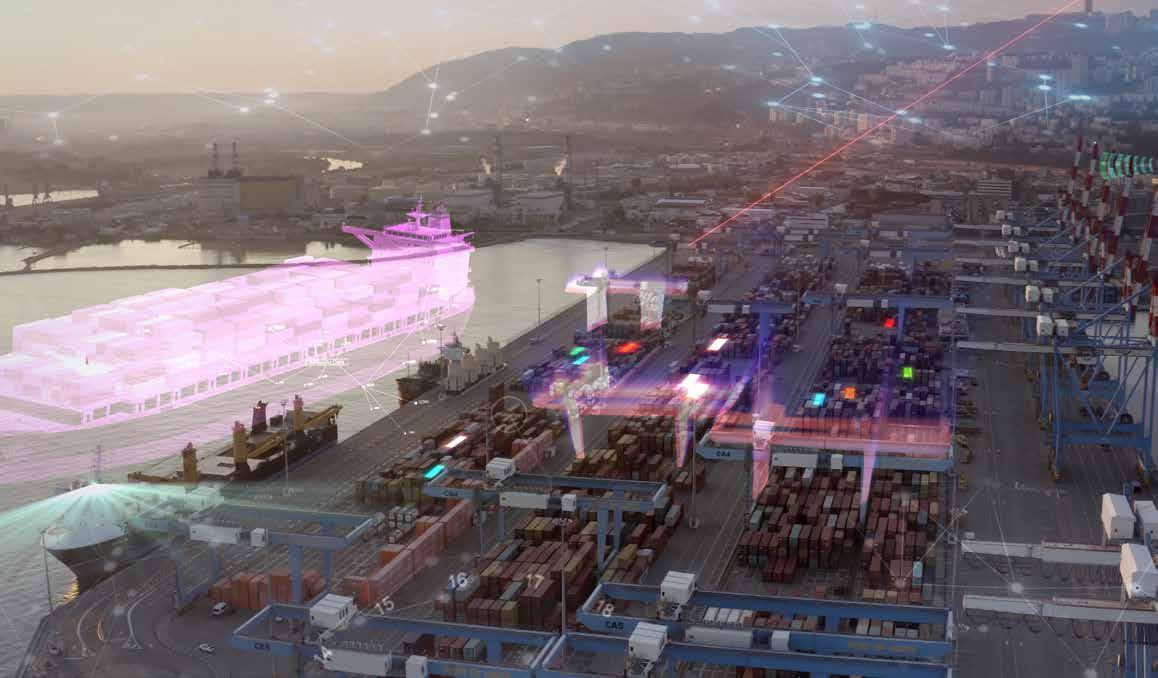
Self-Learning Intelligence: Intelligence is the capacity to reason or understand a specific topic. In this system, it means adapting and learning from operational feedback and historical trends, enabling continuous performance enhancement without manual recalibration.
Predictive Analytics & Proactive Decision-Making: These agents forecast disruptions and initiate corrective actions before issues occur, minimising delays and maximising throughput.
Seamless Systems Integration: This occurs when AI agents interact with IoT sensors, the Terminal Operating System (TOS), and cloud environments to maintain a unified, dynamic understanding of terminal operations.
Enhanced Operational Efficiency: This is the system’s primary benefit. AI agents can
orchestrate container handling more efficiently by analysing live data and recalibrating workflows in real time. They detect potential congestion, anticipate equipment conflicts, and proactively resolve inefficiencies, significantly reducing downtime.
Intelligent Risk Mitigation: An increasingly important advantage enabled by agents. Autonomous agents assess operational risks—from machinery failure to environmental hazards—using probabilistic models and real-time sensing. Integrated with the TOS, they prevent unproductive moves, dynamically reroute operations, and uphold safety protocols.
Unmatched Cost Optimisation: AI agents schedule predictive maintenance, manage energy consumption, and balance workload distribution. Their ability to simulate multiple operational scenarios ensures optimal resource usage, ultimately reducing overhead costs.

Revolutionised DecisionMaking: The presence of intelligent agents redefines decision-making, shifting it from reactive to proactive. Whether dispatching equipment or rerouting cargo in response to sudden weather changes, agents autonomously make decisions aligned with strategic and operational goals.
Sustainability as a Core Principle: AI agents monitor energy use and emissions, making operational decisions that support environmental targets. From reducing fuel consumption to enforcing green logistics practices, the system supports regulatory compliance and corporate sustainability more effectively than ever before.
Collaborative Intelligence and Transparency: AI agents communicate with one another and with human operators, leveraging shared visualisations
and contextual insights. This collective intelligence enhances coordination across departments and stakeholders, boosting both flexibility and accountability.
The integration of AI agents into super-intelligent digital twins marks a transformative leap in terminal management. As technology continues to advance, these systems will evolve into fully autonomous, self-optimising ecosystems capable of handling complex terminal operations with minimal human intervention. By embedding intelligent agents at the core of their infrastructure, terminals can unlock unprecedented levels of efficiency, resilience, and sustainability. Investing in this technology today positions operators at the forefront of innovation, securing a decisive competitive edge in the future of global logistics.

ABOUT THE AUTHOR:
Harrison is a Business Development Manager at Realtime Business Solutions (RBS), and is passionate about how software can revolutionise industries. He graduated from the University of New South Wales with a Bachelor of Commerce and computer science with distinctions. With his fresh ideas and burning ambition, Harrison is dedicated to helping terminals find the best solutions to optimise their operations.
ABOUT THE COMPANY:
RBS specialises in developing stateof-the-art TOS solutions and has worked exclusively in the Container Handling Industry for over 30 years. Over this period, RBS has carried out the installation of the RBS TOPS software to many Container Handling operations around the globe. RBS’s most recent products include TOPS Expert and TOPX Intelligent 3D, which is a superintelligent digital twin, now with a Superintelligent Agent.
For more information, please visit our website www.rbs-tops.com


Peter Szelei, Senior Director Business Development, FERNRIDE
In any complex automated system, a simple truth holds: the system is only as good as its least synchronised part
When Heathrow Airport launched Terminal 5 in 2008, it was meant to be a showcase of modern infrastructure and automation. But within hours, a poorly integrated baggage handling system brought operations to a standstill. Thousands of bags were misrouted or lost, flights were delayed or cancelled, and the terminal’s launch quickly turned into a cautionary tale. The problem wasn’t the individual components; it was a lack of synchronisation across systems.
Container terminals face a similar challenge. While quay cranes, stacking cranes, and gate systems have seen substantial automation, horizontal transport—the movement of containers between these systems—often remains out of sync, creating bottlenecks that limit overall terminal efficiency.
The Port Economics handbook highlights several long-standing reasons why automating horizontal transport is challenging. Diverse terminal environments present the first hurdle, as no two terminals are identical in layout, traffic patterns, and existing equipment. System integration challenges further complicate matters, with ports typically using multiple vendors for equipment and software, making seamless connectivity difficult.
Unlike isolated crane upgrades, changes to horizontal transport affect multiple operational layers,
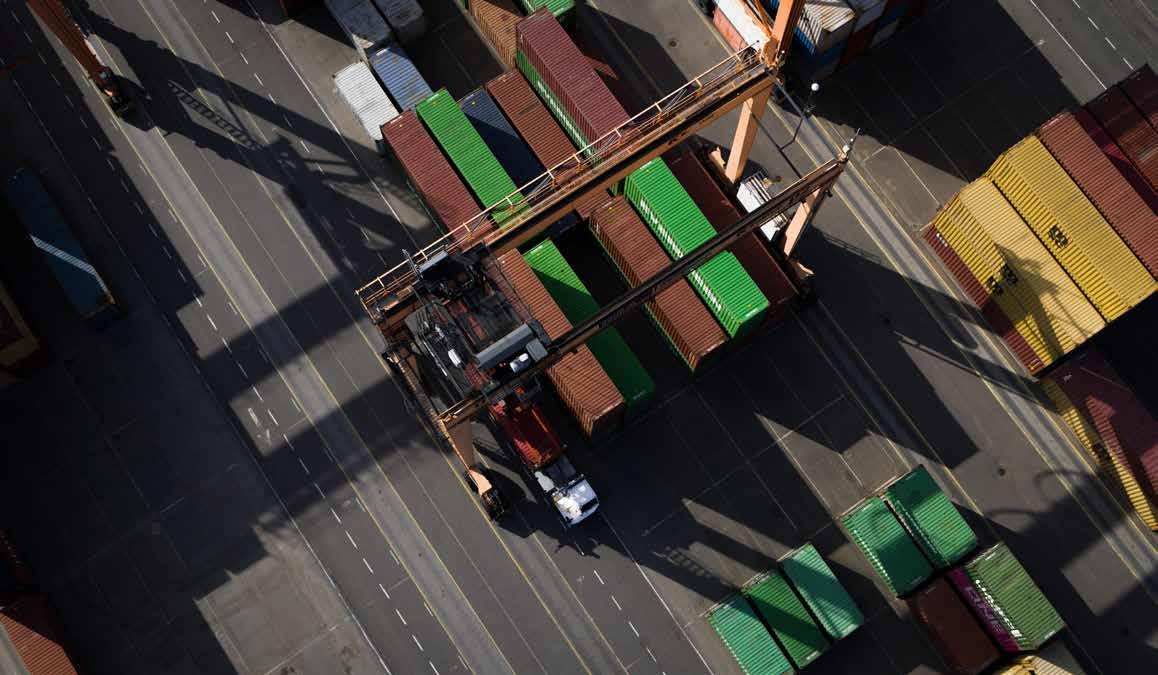
requiring careful planning to maintain smooth operations. Additionally, manual drivers do more than steer. They communicate, troubleshoot issues, and respond effectively to changing conditions on the ground—roles that automation must carefully address.
As Eliyahu M. Goldratt, author of The Goal, aptly noted: “Any improvements made anywhere besides the bottleneck are an illusion.”
The industry has developed several approaches to horizontal transport automation:
Automated Guided Vehicles (AGVs) have been implemented in several major terminals worldwide and typically require significant infrastructure investments, including navigation systems. They operate at lower speeds in controlled environments with predictable traffic patterns and
work best in terminals with adequate space for dedicated pathways. While effective in certain contexts, they represent a substantial capital investment with longer implementation timelines.
Autonomous Terminal Tractors (ATTs) offer advantages, including compatibility with existing infrastructure without major redesign in brownfield terminals. They demonstrate flexibility to operate in mixed traffic environments and adaptability to varying terminal sizes, not just mega-terminals. Their scalable implementation allows for phased rollouts, reducing initial capital requirements. Through ongoing operations and continuous development, the system becomes progressively smarter, with learnings incorporated continuously for ever-improving performance. Hybrid human-assisted systems balance automation with human judgment. In these systems, remote operators can intervene for exception handling while the

fleet operates autonomously, allowing for significant labour efficiency without sacrificing operational flexibility. These systems reduce manual workload, simplify shift staffing, and increase productivity. Thanks to their virtual configurability, they are adaptable and viable for terminals of all sizes. Since fully autonomous solutions are not yet operational across diverse terminal environments, hybrid human-assisted models currently offer the most pragmatic and effective path forward, prioritising uptime and reliability. Over time, as the technology develops and is trained on more data, operators gain a viable path to automate this challenging transport process.
According to the 2024 FERNRIDE report , over 60 per cent of container terminal operators cite system integration as their biggest challenge when implementing automation, particularly for horizontal transport.
Modern autonomous solutions overcome these challenges through flexible (Terminal Operating System) TOS integration approaches like Direct Dispatch, Batch Scheduling, and Just-in-Time integration. The technical requirements for these systems are surprisingly modest, with standard 4G/5G connectivity typically sufficient, rather than specialised infrastructure. Integration also extends beyond software into the physical terminal environment. Advanced perception technologies enable ATTs to integrate with eliminating existing traffic patterns and equipment, the need for segregated lanes or major infrastructure modifications.
Terminal operators are under intense pressure: larger vessels require more containers to be handled simultaneously, and tighter turnaround windows leave no margin for delays. Physical expansion is rarely an option, while competition continues to grow.
Many now see automation as key to achieving stable, reliable operations. These constraints push operators to confront a hard truth: adding more assets alone will not solve a synchronisation problem. Real progress only comes when every part of the operation works as one. This is where synchronised horizontal transport becomes essential to system-wide optimisation, evolving from a background task to the terminal’s central flow coordinator. Industry leaders are addressing this challenge through several strategies. A robust data strategy is a major focus. With growing automation, high-quality data is as crucial as physical infrastructure. Operators are pushing for better interoperability and machinereadable interfaces—not just for dashboards, but to enable faster, smarter decisions. A wellintegrated Autonomous Terminal Tractor (ATT), for example, is more than a vehicle; it’s an active node in a connected network. As a fleet, they deliver efficiencies and optimisation opportunities that manual fleets cannot.

Improved cooperation is also evident. Initiatives by organisations such as the Digital Container Shipping Association (DCSA), which standardise digital interactions between ocean carriers and the wider supply chain, are encouraging terminals, vendors, and tech providers to develop aligned frameworks. The goal is clear: shared standards and playbooks for new technologies, moving from isolated pilots to scalable, long-term operational models
When horizontal transport synchronises with a terminal’s core systems, vehicles gain visibility into TOS priorities, yard slot availability, and crane readiness. This tightens handoffs and reduces idle time. Synchronisation is not just about movement—it’s about everyone and everything operating on shared, current information.
When optimised horizontal transport is fully integrated with core terminal systems, the impact is immediate across operations. Truck-to-crane cycle times drop as vehicles arrive exactly when needed, and new tasks are intelligently assigned, eliminating crane idle time and tightening berth schedules.
In the yard, containers reach their optimal locations on the first move, cutting costly reshuffles. Stacks hold more cargo with shorter dwell times, expanding capacity without requiring more physical space. Terminal operators track every container in real time. Exception
handling shifts from reactive firefighting to structured process management. Automated systems handle routine issues, while human expertise steps in only when needed. Predictability and consistency improve. Throughput rises as terminals run at their true capacity. The Port Economics handbook reinforces what leading operators already know: automation succeeds not through isolated equipment upgrades, but through integrated systems. This mindset transforms terminals from scattered automation efforts into unified, intelligent operations that deliver on their full potential.
Forward-thinking terminals are already making strides. At HHLA TK Estonia , for example, ATTs using a human-assisted approach successfully navigate mixed-traffic environments and challenging conditions, such as public LTE connectivity, including signal interference from dense infrastructure, public network limitations, and harsh winter conditions. Even in such demanding settings, ATTs sustain flow by staying aligned with planning systems and executing moves with fewer disruptions, even when environmental factors delay manual operations.
These progressive terminals aim for more than additional control panels. They are striving for operational calm: a visible, resilient, and predictable flow of containers. They also view automation as a way to create safer
and more appealing jobs. When designed to reflect real conditions, automation can deliver both operational stability and a better working environment.
Automation must be a systemlevel capability, not just a checklist item. As Heathrow’s experience showed, even the most advanced technologies fail when synchronisation breaks down and bottlenecks emerge. In many terminals, horizontal transport is exactly that bottleneck—silently constraining otherwise efficient operations.
As the industry moves towards future-ready ports, meaningful progress won’t stem from isolated equipment or software upgrades. It will come from addressing the space in between, where planning, real-time communication, and physical container movement converge.
This critical layer is no longer overlooked. It is visible, understood, and ready for integration.
Peter Szelei leads business development and customer operations at FERNRIDE, helping terminals adopt proven autonomy solutions for real-world logistics. With over a decade in smart mobility and autonomy, he has held senior roles at Yandex Self-Driving Group and AEye, scaling emerging technologies and forging strategic partnerships across global markets.
FERNRIDE delivers scalable yard automation through humanassisted autonomy, enabling logistics operators to boost productivity, reduce emissions, and improve safety. Trusted by industry leaders like Volkswagen, HHLA, and DB Schenker, FERNRIDE combines advanced technology with proven reliability to tackle driver shortages and operational inefficiencies in complex logistics environments.

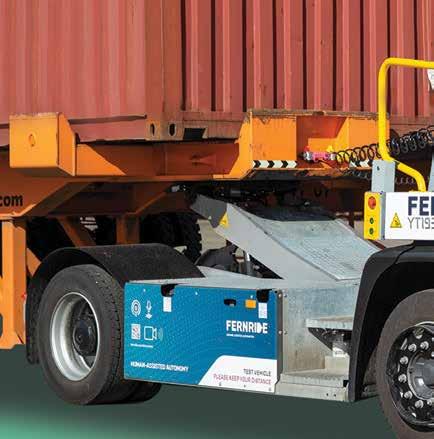





Autonomous Terminal Tractors for Reliable Operations
Seamless solution setup and integration into brownfield and greenfield operation
Full TOS integration
Operational onboarding for on-site personnel
Maintenance and support service

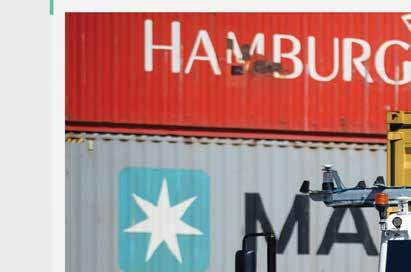








Unlock Efficiency and Safety in Mixed-Traffic Terminals
Productivity boost and lower TCO No infrastructure changes required
End-to-end CE conformity



Mehmet Ali Kayaoğlu, CEO, GullsEye
The logistics industry is moving fast, and terminal operations are under more pressure than ever. Infrastructure expansion alone can’t keep up with rising volumes and growing complexity, especially as delays, inefficiencies and operational blind spots persist. Instead, many ports and terminals are looking towards real-time optimisation as the key to unlocking hidden capacity, reducing waste, and improving service levels.
At GullsEye, we’ve learned that effective optimisation doesn’t come from generic, one-size-fitsall systems. Instead, it requires adaptive, data-driven tools that match the rhythm and realities of each terminal. That’s why our Gen2 Terminal Operating System was designed around a powerful parametric structure, allowing optimisation tools to behave differently based on local operational preferences.
Every terminal has its own mix of cargo types, equipment, peak periods and constraints. In one setting, congestion at the pregate may be the top challenge; in another, it could be crane scheduling or inefficient yard usage. That’s why GullsEye’s approach to optimisation is modular by design, so terminals can address what matters most, without needing to overhaul everything.
We’ve observed recurring inefficiencies across our client base, many of which often go unnoticed:

• Unpredictable or uneven truck traffic at gates Idle cranes or misaligned sequences during loading/ discharging
• Overtime or underutilised workforce due to outdated shift planning Time-consuming manual coordination at weighbridges
• Lack of real-time visibility for operators and managers
Rather than attempting to replace existing workflows overnight, we work with terminals to implement targeted solutions that reduce friction immediately, then scale from there.
GullsEye’s Gen2 platform integrates advanced optimisation algorithms that adapt on the fly. Whether it’s berth allocation, yard optimisation, loading and discharging, or crane scheduling, each decision is made
and reflected in real time, even mid-operation. For instance:
• When vessel delays impact shift schedules or container stacking plans, Gen2 recalculates and reassigns dynamically. When an unplanned arrival causes congestion at the gate, the system instantly adjusts yard assignments and communicates updates across teams.
• During discharging, Gen2 evaluates crane sequences based on available equipment, storage capacity and priority rules to minimise idle time and repositioning.
What makes this possible is Gen2’s highly parametric structure, allowing the system to operate in different modes depending on the terminal’s configuration, policies and preferences. This flexibility ensures that the system doesn’t just optimise technically—it does so in ways that align with how teams actually work.

To achieve this level of flexibility and responsiveness, our optimisation engine leverages a micro-algorithm architecture. Instead of relying on a single, bulky algorithm that attempts to solve all problems at once, our system breaks complex operational challenges into smaller, manageable units, each governed by a conductor algorithm. These micro-algorithms are optimised for speed, adaptability, and low resource demand. Running on a multi-thread platform and enriched with AI and machine learning capabilities, they allow our system to interpret historical data, predict outcomes, and continuously improve decision-making. This modular algorithmic ecosystem enables fast, precise reactions to real-world changes, transforming operational complexity into harmony.
While full automation is a growing trend, most terminal operations still benefit from a balance of automated decision-making and human oversight. Gen2 automates the most repetitive and timesensitive decisions—like container placement, crane scheduling or truck slotting—while giving operations managers the ability to intervene when exceptions arise.
Our optimisation engine is designed to:
• Minimise waiting times and eliminate bottlenecks
• Increase equipment utilisation and reduce idle assets
Automatically reflect new conditions, such as equipment breakdowns or last-minute changes
• Execute changes without interrupting active operations
This responsive architecture ensures that terminals can maintain flow and flexibility, even under unpredictable or high-pressure conditions.
We’ve seen measurable gains across various deployment sites. In one example, a terminal using our weighbridge automation module cut down processing time by more than 40%, eliminating manual input and paper exchanges entirely. In another, real-time shift optimisation reduced overtime costs by 15% while improving task coverage and worker satisfaction.
But more important than the numbers is the mindset shift: teams gain confidence from having a live operational overview. Instead of reacting to yesterday’s problems, they can now make better decisions in the moment, supported by accurate data and smart tools.
In many ways, the biggest opportunities for optimisation aren’t in the flashy future-tech ideas, but in the daily tasks that slow things down: waiting for paperwork, dealing with miscommunication, or spending hours reconciling reports. By automating these pain points and making smarter decisions based on real-time data, terminals can:
• Accelerate throughput without expanding footprint
Improve visibility and collaboration across departments
• Boost resilience to last-minute disruptions
• Reduce costs without compromising service
Ultimately, GullsEye’s Gen2 system isn’t just about control—it’s about empowering operators with the tools they need to be proactive, not reactive.
Optimisation isn’t a one-time transformation; it’s an ongoing process. What matters is not just having the right tools, but being able to adapt them to your operation’s unique challenges. Whether it’s crane scheduling, gate flow or berth allocation, GullsEye’s approach combines real-time adaptability, smart automation and modular design to help terminals move faster, operate smarter and stay competitive in a changing world.
As the logistics landscape continues to evolve, we believe the most valuable technologies will be those that solve everyday problems and scale gracefully as terminals grow.
Mehmet Ali Kayaoğlu leads GullsEye with a focus on innovation and efficiency in terminal operations. With a strong vision and hands-on leadership, he spearheaded the GullsEye Terminal Operating System, helping it grow into a market leader. Today, GullsEye operates in 30+ ports worldwide, streamlining logistics with smart, efficient solutions.
GullsEye is a Terminal Operating System (TOS) provider, enabling over 30 terminals worldwide to optimise their operations and enhance efficiency. Specialising in solutions for all types of cargo, including container, general cargo, liquid cargo, RoRo, and rail, GullsEye offers a flexible and scalable platform designed to meet the unique needs of ports and terminals.




Frank Rubotham, Head of Solution Specialists, Logicalis UK&I, and Dez O'Connor, 5G & Mobility Global Development, CISCO

From smart factories to hyperefficient ports of industry, Private 5G (P5G) is rapidly transforming a range of sectors by unlocking new levels of automation, security, and connectivity. Unlike public 5G, P5G gives businesses full control over their networks, enabling them to tailor connectivity for missioncritical applications while tightening any necessary security measures.
It could be argued that the initial implementation costs for P5G are higher than traditional Wi-Fi. However, the counterpoint is that the long-term benefits, such as reduced maintenance, lower power consumption, and improved security, are proven to result in a positive return on investment.
Additionally, the low latency and increased bandwidth offered by P5G support the highly dataintensive applications emerging across industries, including AR/VR, video surveillance, increased automation, and remote maintenance. Businesses worldwide are benefitting from these new technologies to streamline complex logistical and security operations.
The application of such technologies requires a strong network backbone, like P5G, to remain valuable over time.
One notable sector making inroads in securely automating machinery-based operations is maritime, particularly within ports.
As critical assets of national infrastructure, ports house an array of heavy and sensitive machinery, such as automated gantry cranes
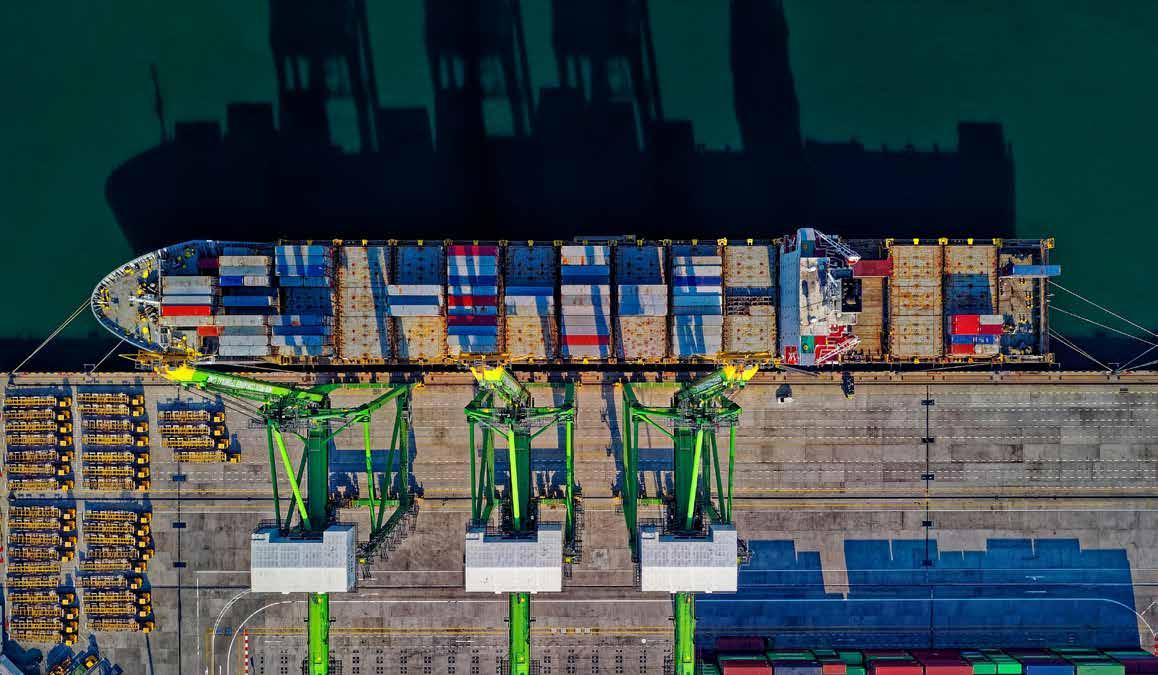
for container handling, vessel traffic management systems to coordinate ship movements, and X-ray scanners for cargo inspection.
These complex operations face growing pressure to integrate smart wireless technologies for long-term innovation and sustainability. Meanwhile, physical and cyber threats continue to rise, with ports increasingly targeted by ransomware and critical infrastructure attacks.
This calls for robust protocols and greater international cooperation to safeguard ports and their supply chains.
Desmond O’Connor, Business Development Leader at Cisco, commented: “Typically, you have three main options when it comes to wireless technology in these types of businesses: point-to-point or backhaul; unlicensed spectrum (Wi-Fi); and private networks, or what we call lightly licensed spectrum networks. Lightly licensed spectrum can only be used by the company that bought it. This is being implemented for P5G
network connectivity by Peel Ports Group at the Port of Liverpool.”
Frank Rubotham, Head of Solution Specialists at Logicalis UK&I, further added: “Ports are very difficult environments to deliver wireless networks into, with lots of moving machinery and people as well as large metal structures, but P5G has made this much easier; it has reduced the amount of cabling that is required and the number of hardware devices. But more importantly, it has delivered connectivity right across the port, so that Peel Ports Group can develop this port in terms of efficiency, security, and employee safety.”
Beyond increasing visibility, establishing and evolving smart port infrastructure underpinned by P5G goes a long way in cutting costs, particularly as energy prices continue to rise.
Rubotham added, “From our point of view, it was all about designing the solution to ensure that the use cases across the port could be fully tested and
their success measured. This entails looking at the environment where connectivity is required; undertaking detailed radio planning and simulation exercises; and ultimately getting to a design that would support the proof of technology.”
Deploying P5G into ports must be done without disrupting the tight schedules ports operate under, often down to the second. Once operational, P5G can minimise critical congestion delays that can arise during cargo delivery and reduce wait times in the transport and supply chain.
With P5G, operators can benefit from low-latency and highly secure connectivity across the entire port. This reduces the need for cabling and hardware and allows for lower power consumption.
For any digitalisation project aiming to improve efficiency, the very first place to start is with
the network. This serves as the backbone of any automation plans undertaken by port operators. However, deploying such infrastructure in these environments is no easy task due to the sprawl of heavy machinery operating in a fast-paced, high-risk environment.
A gradual approach is often best, leveraging existing infrastructure. This helps minimise the risk of downtime in docking areas, storage zones, and masts, while avoiding the hassle and cost of building new infrastructure from scratch. Managing expectations from the outset is crucial to a smooth implementation of P5G rollout, especially when overhauling port operations.
This involves ensuring that high-level organisational goals are properly aligned with the project.
After all, if the backbone of the network cannot meet the expectations of key stakeholders, progress will be limited. Without stakeholder buy-in, even the most
advanced P5G implementation can stall. This is why aligning network capabilities with the business objectives from the outset is vital to ensuring long-term adoption and return on investment.
As ports ramp up their digital transformation, they’re not just becoming more efficient—they’re also expanding their attack surface. Every new connected system, sensor or autonomous asset introduces a potential vulnerability. That’s why aligning cybersecurity with automation strategies isn’t optional—it’s essential.
P5G plays a crucial role in bridging this gap by offering control over who and what accesses the network and ensuring secure data flows across every layer of the port infrastructure.
With so many areas of responsibility for port operations, from cargo and traffic management
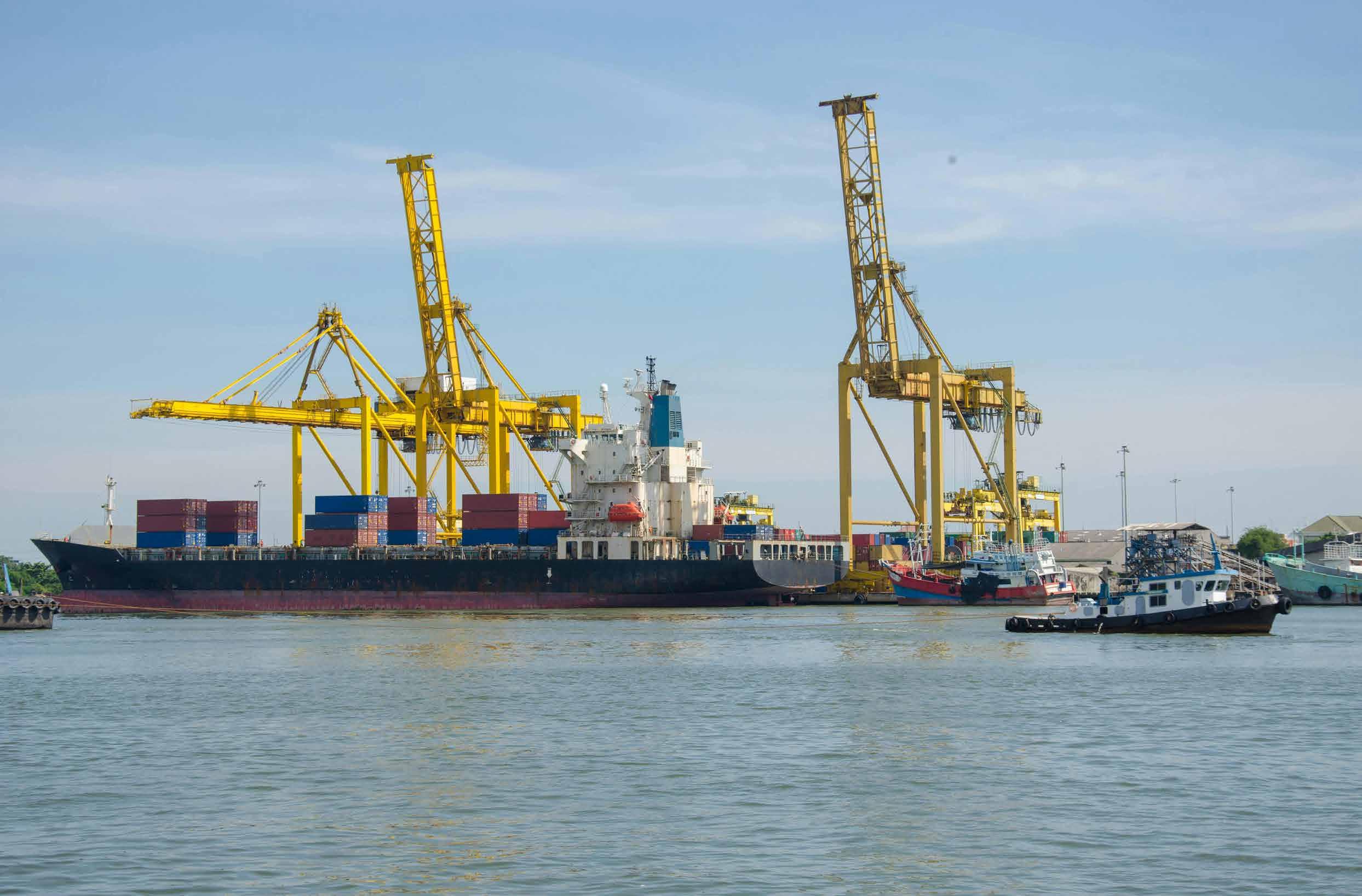

to weather condition monitoring and communications, continuous connectivity is paramount.
Automation bolsters efficiency and reduces strain on staff while also improving safety.
By leveraging the location intelligence within P5G networks and integrating with ‘Man Down’ solutions, port operators can instantly detect when a worker is in distress and trigger an immediate response.
In high-risk, fast-moving environments, this real-time visibility can be life-saving, helping protect both personnel and critical infrastructure.
However, the sheer volume of data needed to feed these safety solutions and automate operations adds to an already quite complex model, making reliable, high-speed network connectivity essential.
Implementing P5G can go a long way in helping overcome the pitfalls brought by other networking technologies. These include loss of connection as machinery moves across Wi-
Fi access points, latency and downtime during disconnections, and the need to deploy miles of cables to ensure port-wide coverage.
Port operations are inherently sensitive and require full network control—something that public networks, as they remain prone to outages and congestion that can bring services to a catastrophic standstill.
Conversely, a fully private 5G network allows ports to customise automation processes, increase capacity, and offer full control over the network and data access, giving increased and tailored security control back to the operator.
P5G will not only solve current issues but also future-proof operations for growth in line with the evolving needs of stakeholders and users of the port. Any maritime applications that Wi-Fi cannot support now can be established over time, with the P5G network able to grow with those new requirements.
While implementation must be gradual, P5G lays the foundation for more efficient and secure port operations. The network can mitigate evolving stakeholder needs and any physical or cyber threats that persist in targeting industrial hubs.
Performance is also boosted by eradicating the extra cabling and hardware that comes with manual technologies.
Partnering with an experienced digital services provider like Logicalis can stop the costs involved in overhauling network and application management from spiralling. Such a partnership also provides access to a wealth of sector-specific and technical knowledge to guide decision-makers through previously uncharted territory.
By aligning a secure automation strategy with business objectives from day one, missteps can be avoided, addressing a common risk in 5G projects.

At the Port of Liverpool, P5G has reduced service dropouts compared to Wi-Fi. Network performance has improved tenfold, thanks to increased bandwidth and reduced latency.
O’Connor added, “This is connecting the cranes and gantry carriers, and in the long term, this could also facilitate push-totalk and man-down technology on phones, tablets and security cameras. As long as it has a SIM card, it can be connected with P5G.”
Rubotham concluded, “The next phases of this project will be to prove that the technology works to the challenging demands of the port and that it can support any growth, expansion or change that Peel Ports Group wants to implement.
We would see this as the future networking solution of choice across all of the ports.”
Frank Rubotham is a senior technology leader at Logicalis UK&I, responsible for driving strategic partnerships and propositions across networking, security, and Private 5G. With over 25 years of experience in IT and telecomsincluding roles at Cisco, Vodafone, and BT - Frank helps enterprise customers adopt transformative technologies that deliver measurable business outcomes.
Dez O'Connor has been innovating across the telecoms sector his entire career. Having led product development in several service providers, Dez has overseen the network evolution from 2G to 5G. He has also run a telecommunications management consultancy serving customers across Europe, the Americas and Asia. More recently, with Cisco Systems, Dez develops Cisco’s global 5G and WiFi7 business. He also leads several UK Government engagements around topics such as the development of rural coverage to solve the digital divide, private 5G networks, neutral host networks and public/private roaming.
Logicalis harnesses collective technology expertise to help clients build a blueprint for success, enabling them to deliver sustainable outcomes that matter.
As a global technology service provider, the company delivers next-generation digital managed services, offering clients real-time visibility and actionable insights into the performance of their digital ecosystems, including reliability, user experience, security, economic performance, and sustainability.
With over 7,000 ‘Architects of Change’ operating across 30 territories worldwide, Logicalis supports more than 10,000 clients across various industry sectors in creating sustainable outcomes through technology.
Cisco (NASDAQ: CSCO) is the worldwide technology leader that is revolutionising the way organisations connect and protect in the AI era. For more than 40 years, Cisco has securely connected the world. With its industry leading AI-powered solutions and services, Cisco enables its customers, partners and communities to unlock innovation, enhance productivity and strengthen digital resilience. With purpose at its core, Cisco remains committed to creating a more connected and inclusive future for all.




Dom Magli, Reporter, Port Technology International, interviewing Niels Kristiansen, CEO & Co-Founder, Portchain

Over 150 container terminals, accounting for more than 38 per cent of global container terminal capacity, are now connected through the Portchain Network. This growing network supports efforts to improve predictability, efficiency, and sustainability in container vessel operations. Each terminal’s experience has been shaped by local challenges and opportunities, but all share a common goal of advancing port call coordination through digital collaboration. Since the launch of Portchain Connect three years ago, these terminals have been working toward smarter berth alignment and scaling Just-In-Time (JIT) vessel operations. Since the launch of Portchain Connect just three years ago, these partnerships have powered smarter berth alignment and laid the foundation for scaling Just-InTime vessel operations.
How would you assess the current state of JIT port call adoption across the 150 terminals now part of the Portchain Network?
There’s clear momentum across our network toward more transparent and collaborative port calls. Many of the 150+ container terminals connected to Portchain already support key elements of JIT operations, such as timely schedule updates and rapid digital alignment with carrier changes. As digitalisation accelerates, terminals are stepping up as strategic partners, enabling JIT port calls that help carriers cut fuel consumption and emissions.

With experience across over 150 container terminals, what key operational insights has Portchain gained from these global collaborations?
One major insight is replacing manual berth window alignment with digital processes to unlock value everywhere. Even small steps toward structured, digital communication led to fewer delays, lower waiting times, more accurate berth planning, and stronger trust between terminals and carriers. Efficiency often comes from clarity and shared visibility, not complexity.
How does Portchain address the challenge of supporting terminals with varying levels of readiness and infrastructure when implementing digital berth alignment tools?
Flexibility is core to our approach. Portchain Connect is designed to meet terminals where they are—whether that means using a user-friendly web app or integrating directly via API. This
allows for fast onboarding without heavy infrastructure or long lead times. Our modular platform has scaled effectively across terminals of all sizes and digital maturity, supporting a wide range of workflows while delivering a consistent user experience.
In what ways has Portchain transformed the alignment between terminals and carriers on berth planning and execution?
We’re shifting berth alignment from reactive, manual coordination to proactive, collaborative workflows. Portchain Connect provides a shared, real-time view of vessel schedules and berth windows, allowing planners on both sides to anticipate changes and adjust together. This leads to faster decisions and more predictable operations—not just at one port, but across entire voyages.
What tangible benefits — both operational and environmental — have been realised through

enhanced berth alignment and real-time collaboration within the network?
The impact has been significant. Greater data visibility has pushed the average first ETB update from terminals to more than seven days in advance, allowing carriers to slow down sooner, cutting fuel use by over 9 per cent on some sea legs. In a sample of 1,400 port calls, waiting times were reduced by two hours per call. In 2023 alone, this contributed to avoiding 194,000 metric tons of CO2 emissions across the network. Additionally, 94 per cent of users report time savings from reduced phone and email back-and-forth. These gains don’t come from major overhauls, but from better coordination, planning, and transparency.
As digitalisation continues to advance, what future developments can we expect from Portchain in berth alignment and port-call optimisation?
Our North Star is enabling Just-InTime at a global scale. We’re focused on building tools for more accurate information sharing, so terminals and carriers can plan and make faster operational decisions. We’re growing the Portchain Network and fostering more direct terminal collaboration. Predictive features are also in development to boost fuel efficiency, berth utilisation, and schedule reliability, delivering measurable financial and environmental impact.
With Just-In-Time operations gaining momentum, how do you foresee terminal–carrier collaboration evolving from initial implementation to longterm operational culture?
Just-In-Time isn’t just a tool—it’s a mindset shift. As JIT practices become part of daily workflows, collaboration evolves from pilot projects to standard operating procedures. Terminals move beyond simply providing berths to actively enabling reliability for carriers. Our experience across more than 150 terminals shows the industry converging on a model built on transparency, agility, and shared success.
Niels is the CEO and Co-Founder of Portchain. Before founding Portchain, he worked at McKinsey advising primarily container terminals and carriers on strategy and digitisation. He also led McKinsey’s first internal startup also focused on shipping. Niels studied Economics at the University of Gothenburg and Oxford, and has an M.B.A. from M.I.T.
Portchain was founded by three McKinsey project managers who saw the inefficiencies in how container shipping lines and terminals planned and aligned operations using spreadsheets, emails, and phone calls. They envisioned a digitised information-sharing system that could transform the industry, enabling Just-In-Time operations and significantly boosting productivity while reducing emissions. By combining intuitive UX design with advanced analytics and cutting-edge web technologies, Portchain enhances operational performance for shipping companies. Our mission is to make shipping more predictable, efficient, and green.


Liftech's innovation, experience, and integrity helps ensure our clients get high performance and high reliability automated cranes. We can help you navigate from the many options available for automated ship-to-shore dual trolley cranes, automated stacking cranes, and automated intermodal yard cranes, so your operations benefit from features such as remote operation, stack profiling, OCR, automatic landing, and fully automated landside handling, while meeting the current best practices for data handling and cybersecurity. Innovation, Experience, Integrity

Margherita Bruno, Editor, Port Technology International, interviewing Mark Bromley, Vice President Client Management, Tideworks
Technology




Before we dive into the specifics, could you give us a brief overview of Tideworks and its main offerings within the intermodal logistics sector?
Tideworks Technology has been a trusted partner to marine and rail terminal operators for over 25 years. We provide comprehensive terminal operating system (TOS) solutions and expert services that help terminals run more efficiently and embrace modernisation as their needs evolve. We have partnered with over 120 facilities globally, including major intermodal terminals in North America and the UK.
In the intermodal sector, our flagship product is Intermodal Pro (IPRO), a purpose-built TOS we designed specifically for rail and intermodal terminals. IPRO gives operators realtime visibility, streamlines planning, and maximises equipment and asset utilisation to support scalability and increase throughput.
Tideworks’ Intermodal Pro TOS has just celebrated 15 years since its first installation. How has the solution evolved over time, and how do you ensure it remains adaptable
to the growing demands of global intermodal terminals, particularly with the challenges of rising cargo volumes and tighter operational deadlines?
Over the past 15 years, Tideworks’ Intermodal Pro (IPRO) has been deployed at more than 85 rail terminals, including three of the six Class I railroads and several leading terminals in the UK. Each implementation has played a key role in shaping the platform, helping us evolve its capabilities in response to real-world terminal needs.
A core focus of our modernisation efforts has been enabling terminals to operate with more control and flexibility. Today, users can configure their own business rules directly within IPRO, significantly reducing implementation timelines and allowing them to quickly adapt to changing operational demands.
To meet the growing challenges of rising cargo volumes and tighter deadlines, we’ve prioritised access to real-time data, automation and seamless integration across terminals. IPRO supports direct integration with automated gate systems, appointment systems and third-party platforms via open APIs.
We’ve also introduced the Tideworks Data Platform. It aggregates near-realtime insights across systems, empowering terminals to make more informed decisions that improve productivity. These enhancements support intermodal terminals’ operational goals and pave the way for future AI and machine learning integrations.
Can you share a success story where Tideworks’ TOS really helped optimise yard operations or ease congestion in rail terminals?
One standout example is our work with Freightliner UK (formerly G&W). Before deploying IPRO, one of their terminals experienced severe gate congestion, with trucks waiting up to two hours. After implementation, average wait times dropped to just 20 minutes, benefiting the terminal’s operations and the downstream supply chain.
At Freightliner’s Birmingham terminal, IPRO helped increase storage capacity, an important feat in space-constrained, high-demand environments. Following the success of initial TOS deployments, we’ve continued to support Freightliner in integrating systems across its UK terminal

network, increasing optimisation and process automation, reducing terminal congestion during peak hours, and improving customer service across sites.
As sustainability becomes more important in logistics, how is Tideworks playing its part in reducing the environmental impact of rail
and intermodal transport? Are there any specific features in Intermodal PRO that contribute to better energy efficiency or a lower carbon footprint?
Sustainability is top of mind for us and our customers. Our TOS improves the efficiency of cargo and equipment moves, which directly contributes to reduced
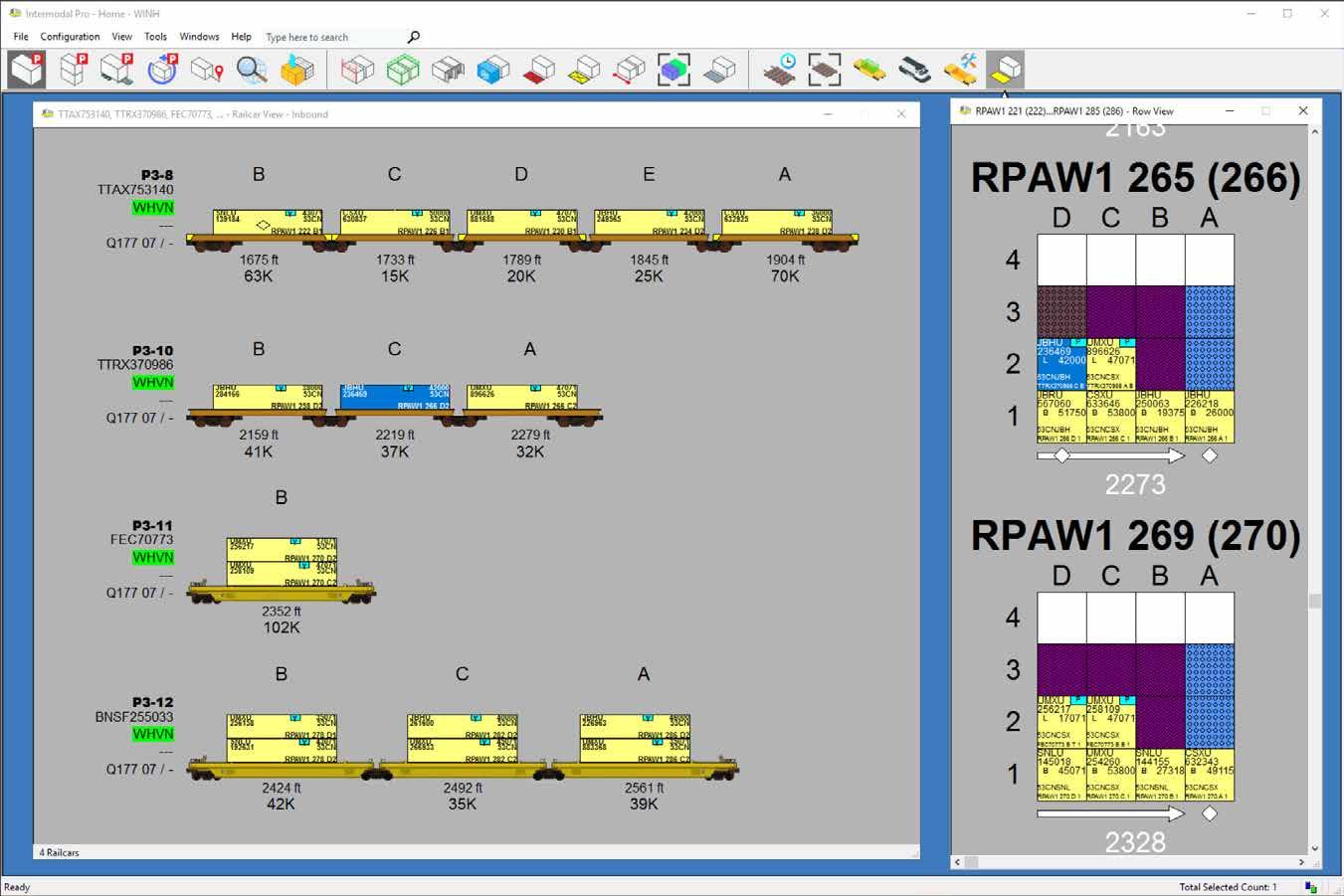
energy consumption and emissions. Specifically, IPRO’s real-time planning capabilities help reduce idle time, optimise equipment utilisation and streamline yard movements. Our equipment dispatch solution, Traffic Control, which is often deployed with IPRO, also aids in better energy efficiency. It pairs with container handling equipment to prioritise moves, helping terminals reduce unnecessary fuel consumption.
Together, IPRO and Traffic Control increase productivity while supporting more sustainable terminal operations. Operators who’ve seen these benefits firsthand include Tideworks in modernisation strategies aimed at lowering the carbon footprint across entire terminal networks.
Collaboration is crucial in intermodal logistics. How does Tideworks ensure that its systems work smoothly with rail operators, port authorities, and third-party logistics providers to keep the supply chain flowing seamlessly?
Collaboration is central to successful intermodal operations and system deployments. We designed our TOS for seamless integration with appointment

systems, automated gate systems, vehicle booking platforms and access control technologies. Through built-in API extensibility, our solutions support smooth third-party integrations and the flexibility for future enhancements.
A strong example is our integration with Camco’s gate system and Advent eModal’s vehicle booking platform with Freightliner UK. This deployment was completed with minimal disruption to operations and supported over 4,000 truck visits, achieving an average turnaround time of under 26 minutes. With three technology providers involved, the project highlights the importance of collaboration and how seamless integration between systems can deliver measurable results.
What are some of the key challenges Tideworks faces when implementing its solutions across various intermodal terminal environments, and how do you customise the technology to fit the unique needs of each terminal?
Every terminal is unique. And while the objectives may be similar, the path to achieving them varies widely based on location, layouts, labour and operating procedures. We follow a phased implementation approach and work closely with terminal operators to understand their priorities and existing operating landscapes to minimise disruption and maintain continuity.
For example, our Professional Services team partners with terminals to develop
tailored strategies that align with their business and operational goals. Our core TOS solutions, including IPRO, are highly configurable, so we can tailor rules, workflows and integrations to meet each customer’s operational model. We view every deployment as a partnership, not a one-size-fits-all project.
As Tideworks looks ahead, what’s next for the future of intermodal logistics? How do you see technologies like AI and machine learning shaping the next generation of terminal operations?
We’re always evaluating how emerging technologies can strengthen our solutions and better support our customers. Looking ahead, the next generation of terminal operations will be shaped by data.
While AI and machine learning are already influencing operational planning, their long-term success depends on accurate, real-time data. Because of this, modern TOS is so essential. It provides the structured, actionable data needed to power these intelligent tools. We’ve invested in Tideworks Data Platform to give operators a secure, scalable foundation that unlocks the full potential of AI.
Ultimately, it’s the combination of a robust TOS, real-time data and advanced technologies like AI and machine learning that will enable faster, intelligent and more resilient operations.
Lastly, what insights or collaborations did you explore at the Intermodal Container Terminal Conference? How do you think events like these can help drive innovation to tackle the future challenges of intermodal logistics?
These conferences are invaluable. They bring together operators, technology providers and regulators to tackle shared challenges and explore opportunities. We appreciated the chance to lead and participate in discussions around rail modernisation, digital transformation, automation and system integrations. These conversations help us better understand industry needs and ensure our technology evolves in ways that truly support our partners.
As intermodal logistics continues to grow more complex, these conferences are key to driving innovation and collaboration that will allow us to improve the industry together.

Dom Magli, Reporter, Port Technology International, interviewing Harrison Nguyen, Business Development Manager, Realtime Business Solutions




How has RBS integrated automation into its Terminal Operating Systems (TOS), and what impact has this had on terminal efficiency and productivity?
RBS has integrated both equipment and process automation directly into our TOS, resulting in significant improvements in terminal efficiency and productivity. On the process automation side, features like automatic berth planning and automatic EDI message processing streamline operations. Then, our equipment automation includes the ability to control and schedule all different types of machinery, such as Automated Rubber Tyred Gantry cranes (ARTG), Automated Stacking Cranes (ASC), and Automatic guided vehicles AGV. We can also do it on a device level to seamlessly integrate technologies like RFID, OCR, and DGPS. These capabilities have delivered incredible results, with RBS helping terminals achieve outstanding operational benchmarks, such as 73 moves per hour at an ASC terminal and 51 moves per hour at an ARTG terminal in Indonesia. RBS customers with semi-automated terminals have also seen noticeable increases in equipment efficiency and
move rates since implementing the RBS TOS. A key differentiator for RBS is that our automation is seamlessly integrated within the TOPX system, without the need for any third-party middleware. This not only simplifies and speeds up implementation but also ensures a more cohesive and reliable system.
RBS automation is no longer an emerging technology; it’s a proven, highperforming solution that has delivered consistent success across a range of terminal environments.
Can you explain how Digital Twins are being utilised in RBS' TOS solutions, and what advantages do they provide in terms of predictive maintenance and operational optimisation?
At RBS, Digital Twin technology plays a key role in transforming terminal operations through our advanced TOPX Intelligent 3D system. A Digital Twin is essentially a digital representation of a physical object, person, or process, contextualised within a virtual environment. While many systems may offer basic visual representations, TOPX Intelligent 3D goes far beyond a standard Digital Twin. It integrates live operational
and executional features, creating a powerful, intelligent tool for terminal management. One of its standout features is its super-intelligent capabilities, which allow it not only to visualise the terminal landscape but also to predict and proactively resolve operational issues before they escalate. This makes it a highly effective solution for both predictive maintenance and operational optimisation. For example, TOPX Intelligent 3D can foresee and mitigate common issues like congestion, traffic build-up, trailer bottlenecks, delays in planning, crane hangs, and unproductive movements. By automatically re-routing, re-planning, and re-assigning resources, it ensures the most optimal execution with minimal to no inefficiencies. This smart, responsive system empowers terminals to run more smoothly, efficiently, and with fewer interruptions, ultimately delivering a higher standard of performance and reliability.
With the growing trend toward automation in the logistics sector, what recent advancements in automation has RBS made to enhance its TOS platform and support smarter decision-making?

RBS continues to stay at the forefront of automation in the logistics sector by consistently enhancing our TOS to support smarter, more data-driven decision-making. The latest advancement in this direction is the upcoming launch of TOPX Superintelligent Knowledge, an evolution of our existing TOPX Intelligent 3D platform.
This next-generation solution leverages Superintelligence to transform vast amounts of terminal data into actionable knowledge, pushing the boundaries of automation, predictive analytics, and port management. At its core, TOPX Superintelligent Knowledge acts as both a predictor and a problem-solver, identifying potential future issues before they occur to ensure seamless terminal operations. It harnesses predictive analytics to forecast cargo delays, congestion points, and areas for efficiency improvement. Through automated decision-making, it provides real-time recommendations for rerouting, crane assignments, and berth management. Additionally, its use of advanced optimisation algorithms allows the system to continuously learn and improve processes such as container stacking, truck dispatching, and workforce allocation.
These innovations empower terminal operators to make faster, smarter decisions while minimising disruptions and maximising operational efficiency.
Since its launch in 2024, how has the TOPX Intelligent 3D system leveraged Digital Twin technology to improve real-time decision-making and predictive maintenance in terminal operations?
Since its launch in 2024, the TOPX Intelligent 3D system has significantly advanced terminal operations by leveraging both Digital Twin technology and a powerful superintelligent engine to enhance real-time decision-making and predictive maintenance. Unlike traditional Digital Twins that simply mirror physical environments, TOPX Intelligent 3D integrates operational and executional functionality, making it an active, intelligent tool that delivers tangible results. Its super-intelligent capabilities allow the system to predict and proactively resolve issues before they impact operations. This means terminals can now avoid common disruptions such as congestion, trailer bottlenecks, crane hangs, and unproductive movements,
all of which are detected and addressed through automated re-routing, replanning, and resource reallocation.
One of the key features of this system is its ability to visualise these challenges, which enhances situational awareness and provides operators with a clear understanding of how and why certain decisions are made. This 3D visualisation is crucial—not only does it validate the actions of the superintelligent agent, but it also ensures no critical information is overlooked in the decision-making process. Ultimately, TOPX Intelligent 3D offers a smarter, more proactive approach to terminal management, helping operators optimise performance, minimise inefficiencies, and maintain smooth operations.
What were the key benefits and challenges of RBS's recent TOS migration at Klaipedos Smelte CT, and how has it improved terminal operations?
The recent migration of the Terminal Operating System at Klaipedos Smelte Container Terminal from TOPS Advance to TOPS Expert, completed in 2024, marked a major milestone in the terminal’s digital

transformation. According to Linas Miceika, Operations Director at Klaipedos Smelte, the terminal has long valued the functionality of TOPS and the strong, customer-oriented collaboration with the RBS team. He emphasised that with the new system in place, the terminal is now technologically equipped to support future growth and innovation. One of the standout benefits of the migration is that TOPS Expert offers a far more comprehensive suite of terminal management capabilities, including enhanced operations optimisation, Automatic vessel planning (AVP), and state-of-the-art berth planning, to name a few.
A key factor contributing to the smooth transition was the deployment of TOPS Expert’s web-based equipment control system in a hybrid setup alongside the existing TOPS Advance EC during the initial stages. This parallel operation allowed yard staff to begin using the new system in real-time, significantly reducing both migration risks and training burdens ahead of the full migration. Despite the complexity of such a transition, the step-by-step implementation approach has helped ensure a seamless handover, positioning Klaipedos Smelte to achieve higher levels of efficiency, coordination, and operational excellence moving forward.
(Linas Miceika, Operations Director, said: “We have been satisfied with the functioning of TOPS and the customeroriented collaboration with the RBS team for many years. With the new system, we are technologically well prepared for our further growth and new technologies. The migration is taking place step by step. Our
team is making utmost efforts to be fully prepared for the new system.”)
What strategies are RBS implementing to lead innovation in the terminal operations sector, and how do these plans set them apart from the competitors?
RBS is actively leading innovation in the terminal operations sector by continuously investing in research and development of new technologies and features that are still largely unexplored by others in the industry. This forwardthinking approach has positioned RBS at the forefront of digital transformation in port and terminal management, setting the company apart from competitors. A key example of this innovation is the launch of TOPX Intelligent 3D, a groundbreaking system that goes far beyond the traditional Digital Twins offered by others. Unlike standard visualisation tools, TOPX Intelligent 3D combines real-time operational functionality with predictive capabilities, enabling smarter decision-making and performance optimisation at a level not yet seen elsewhere in the market. Moreover, RBS is committed to pushing the boundaries of technology even further, developing tools and modules such as TOPX Superintelligent knowledge that help terminals make faster, more informed decisions while improving efficiency across all operational areas. This proactive and visionary mindset ensures that RBS not only keeps pace with industry demands but continually redefines what’s possible in terminal operations.
What are RBS's key objectives and strategic ambitions for 2025?
RBS’s key objectives and strategic ambitions for 2025 are centred around expanding the capabilities of our systems and driving innovation by creating new product classes that are largely unexplored. A major focus for the year is the development and release of new modules—TOPS Cargo and TOPS RORO— which will extend the TOS platform beyond container operations to support general cargo and roll-on/roll-off (RORO) operations. This expansion comes in direct response to growing interest from both new and existing customers who handle a mix of cargo types and have expressed a clear need for an integrated solution.
In parallel, RBS is preparing to launch TOPX Superintelligent Knowledge, a major enhancement of the current TOPX Intelligent 3D system. This nextgeneration technology will harness Superintelligence to transform raw operational data into actionable knowledge, significantly boosting automation, predictive analytics, and overall port management capabilities. Notably, TOPX Superintelligent Knowledge was showcased during our keynote presentation at this year’s CTAC 2025, where it was met with strong interest from industry leaders. These initiatives reflect RBS’s broader ambition to deliver a fully unified and intelligent TOS platform that meets the evolving needs of modern terminals, while solidifying our position as a leader in technological innovation within the industry.